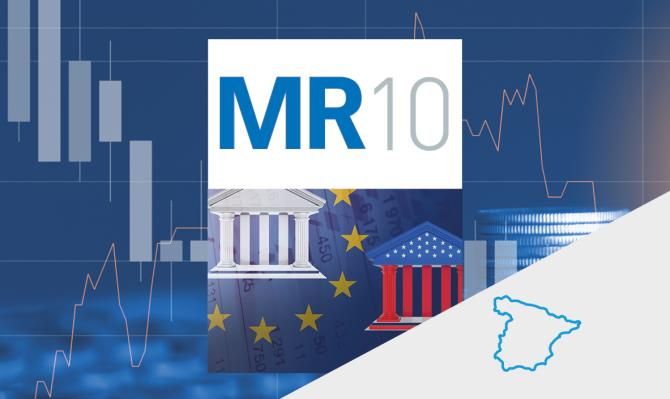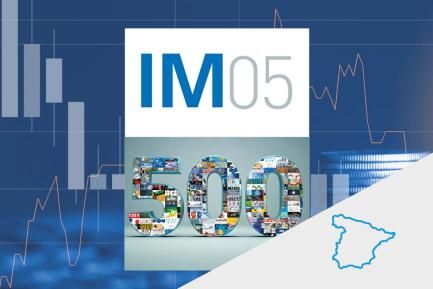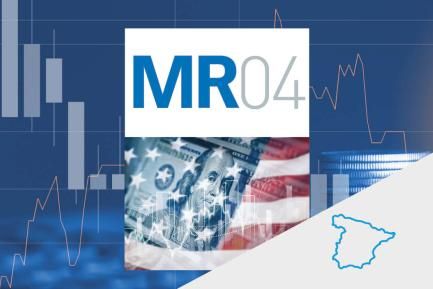
The growth of the Spanish economy moderates
The recovery following the pandemic was more intense than previously estimated in view of the National Statistics Institute’s revision of the GDP series since 2021
According to the new growth path, GDP grew by 6.4% in 2021, 0.9 pps more than originally estimated, and by 5.8% in 2022, 0.3 pps more than before. Based on this new data series, GDP reached the pre-pandemic level of Q4 2019 in Q3 2022, rather than in Q2 2023. Also, the National Statistics Institute has revised upwards the quarter-on-quarter GDP growth for Q1 and Q2 2023 by 0.1 pps, to 0.6% and 0.5%, respectively. Thus, GDP in Q2 2023 is 2.0% above the level of Q4 2019, rather than the 0.4% previously estimated. These revisions in 2022 and in the first half of 2023 lead us to raise our growth forecast for this year as a whole by 10 pps to 2.4%.

The latest indicators point to a moderation of growth in Q3
As we emerged from the summer, we found an economy in the midst of a slowdown compared to the significant growth rates recorded in the first half of 2023. Job creation in terms of Social Security affiliates, while still positive, has gone from growing at a rate of over 1% quarter-on-quarter in Q2 2023 to more moderate rates, at 0.2% quarter-on-quarter in Q3 2023. In terms of consumption, average retail sales in July and August grew by 0.8% compared to the average for Q2 2023 (+1.9% quarter-on-quarter in Q2), suggesting that consumption continued to grow in Q3, albeit at a more modest pace than in the previous quarter. In addition, the early indicators based on surveys, such as the Purchasing Managers’ Indices (PMIs), reveal that the weakness shown
by the manufacturing sector in recent quarters has persisted. Specifically, the manufacturing PMI scored 47.7 points in September, placing it in contractionary territory (below the 50-point threshold) for the sixth consecutive month. This was due to a fall in production and new orders, while the services PMI rose slightly in September up to 50.5 points, placing it back in expansionary territory following the negative parenthesis of August (49.3 points).

Job creation slows in September
In September, the average number of registered workers increased by 18,294 people, falling short of last year’s increase (+29,286) but exceeding the September monthly average (+14,300 on average in 2014-2019). Correcting for seasonality, employment rose by 12,921 workers, the weakest growth in the last three months. That said, the Spanish economy’s capacity to continue to generate employment in an adverse context should not be overlooked. In terms of registered unemployment, it increased in September for a second consecutive month, this time by 19,768 people and placing the total unemployment figure at 2.722 million people. This increase is higher than in September last year (+17,679) but lower than the average for the period 2014-2019 (+21,801).

Headline inflation in Spain picks up in September, in line with expectations, due to a base effect in the energy component, but core inflation continues to moderate
The provisional headline inflation index for September stood at 3.5% (0.9 pps higher than in August). On the other hand, core inflation, which excludes energy and fresh food, stood at 5.8%, 0.3 pps below the figure for August. The increase in the headline index is due to electricity prices and, to a lesser extent, fuel. Both components recorded sharp declines in September 2022.

The price of housing grew steadily in Q2
In particular, prices based on valuations continued to show positive growth in Q2 2023, although the pace of progress was more modest than in the previous quarter (0.3% quarter-on-quarter compared to 2.2% in Q1). In year-on-year terms, growth remained practically unchanged (3.0% compared to 3.1% in Q1). The price of housing is showing remarkable resistance in the short term despite the sharp rise in interest rates, no doubt due to the scarce supply of housing in the market.
The household savings rate increased thanks to the significant growth of gross disposable income in Q2
Specifically, the household savings rate stood at 20.1% of gross disposable income in Q2 (static figure, not corrected for seasonality). This is a higher level than in Q2 2022 (14.8%) and also compared to pre-pandemic levels (17.1% on average in the Q2 periods of 2015-2019). This rebound corresponds to gross disposable income growing much faster in Q2 (12.2% year-on-year) than household spending (5.2%). In the trailing last four quarters on a cumulative basis, the savings rate climbed to 10.2% from 8.5% in the previous quarter.

Budget execution data up to July place the Spanish budget deficit at 2.2% of GDP
The consolidated general government deficit, excluding local government corporations, was similar to July 2022 and July 2019 (both 2.0%). Consolidated public spending, on the other hand, rose by an alarming 7.7% year-on-year in the cumulative period to July, exceeding the increase in government income (6.7%). Of particular note is the slowdown in tax revenues (+4.6% year-on-year in the cumulative period to July, compared to +6.1% to June) due to the fall in the collection of indirect taxes in July (–6.6% year-on-year).
The tourism sector shines brightly
The tourism sector continues to perform well, with a cumulative surplus in the balance of tourism services between January and August of 37.5 billion euros, compared to 27.7 billion in January-August 2022. The tourism sector enjoyed a strong month of August, with the arrival of 10.08 million foreign tourists during the month, who spent 13.5 billion euros. These figures are 0.45% below the level recorded in the same month of 2019 in the case of arrivals (+2.6% in July) and 15.0% above in the case of spending (+16% in July).



